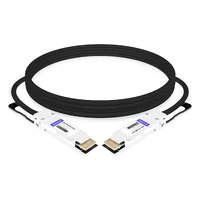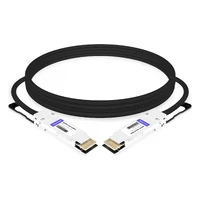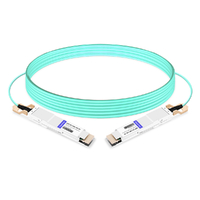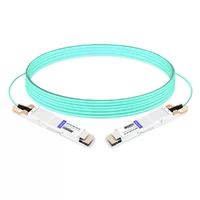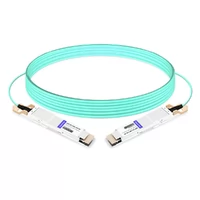Having advanced everything in the last few decades, the broadband available worldwide is pressured to perform better. Several innovations have been undertaken within the industry to increase connectivity abilities further. The QSFP-DD cable systems have been highlighted as providing a staggering 400 Gb/s over backplanes and cable assemblies. The apparent fact about the growing bandwidth range in the recent Solomon sub-network editions has been astonishing. In addition, the SD 4k vs. XHDD will also be examined to showcase other connections forged effectively through the growing fusion of the RSVP CM and Instinct LTE networks. Within this article, the author will touch on the primary deployment of temples and Cardin-neutral networks in Western and Eastern Europe. To that end, more information will be presented on the main deployment approaches.
Table of Contents
ToggleWhat is a QSFP-DD Cable?
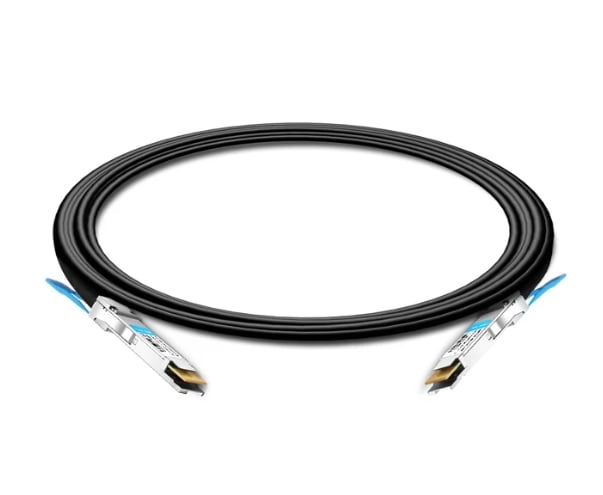
The QSFP-DD cable, or Quad Small Form-factor Pluggable Double Density cable, is a new type of pluggable transceiver designed to increase the data transmission speed within the network. It is a vital new feature enabling 400G Ethernet, which offers greater data now than the previous Ethernet generations. As to the “double density” attribute, the cable has eight electrical lanes; hence, the capacity features are two times more than those of previous QSFP modules. This results in the capacity of data centers and telecommunication networks to provide faster speeds while maintaining high levels of connectivity density, therefore enhancing the efficiency and expandability of data-centric activities in companies.
Key Specifications and Features
There are quite a few necessary specifications of the QSFP-DD cable that enhance its performance within high-speed networking environments. It enables data rates of up to 400Gbps in aggregate by using eight 50Gbps electrical lanes. Backward compatibility and ease of deployment are ensured because the cable is suitable for use with QSFP28 and QSFP+ modules. Another noteworthy aspect is its design, which is compact enough to provide even higher density within the size of a standard QSFP module, which helps maximize network space. The QSFP-DD cable is also meant to achieve high thermal management, which is crucial for functioning well in intensive data center operations. It also meets the requirements of the industry standards set in the QSFP-DD MSA, simplifying the integration between networks with different configurations. All these attributes together make a solid case for positioning QSFP-DD as the future standard for companies that need scalable and efficient data transmission.
The Role of Double Density in Network Improvement
A double density is of crucial importance since it aids significantly in the improvement of the network by more than doubling the data throughput capacity with no additional physical footprint. Due to double-density technology, double the number of channels are accommodated in the same physical volume, so the network infrastructures can simultaneously support higher amounts of data transfer. This enhancement is essential for data centers and telecommunication networks, which are constantly undergoing an increase in demand due to the growth of data transfer and consumption. With its most significant increasing density, the industry allows the QSFP-DD to be effectively employed, enabling networks to scale well, support higher speeds, and even maintain reliability, safeguarding infrastructure investments against technology changes and demands.
Comparing QSFP-DD and QSFP28 Technologies
In comparing technologies between QSFP-DD and QSFP28-module, it is essential to emphasize that QSFP-DD (Quad Small Form Factor Pluggable Double Density) represents a qualitative leap in terms of data capacity and scalability. Specifically, with the support of 8 channels, it can be said that QSFP-DD delivers twice the amount of data provided by QSFP28 with its four significant channels. This means that while QSF-DD can transmit 400 Gbps, its counterpart QSFP28 can only manage to transmit 100 Gbps. The improved bandwidth potential and backward compatibility of QSFP-DD provide a tactical benefit for data centers looking to upgrade their systems and fit into future verticals because the plug-and-play concept seamlessly works. Besides, to effectively perform its functions in these centers, QSFP-DD does not occupy a more significant physical space than its competitors because it has the same volume as QSFP28. This avoids implementing additional physical space and dramatically optimizes the performance and operational capability of the network’s strategic infrastructure.
How Does a QSFP-DD Cable Connect?
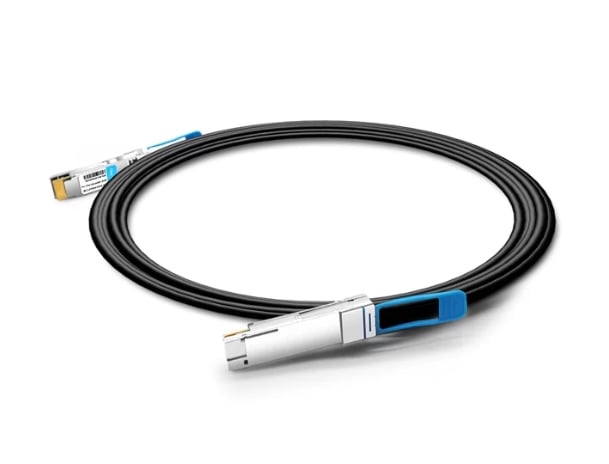
Exploring Direct Attach Copper Options
In a data center and telecom network, Direct Attach Copper (DAC) cables can be used for short-range transmission, or OV, as they are also known as high-speed interconnects. They present an economical, fast, and dependable method for connecting network devices. Typically, DAC cables are terminated with QSFP-DD connectors and can be installed as-is for data rates of up to 400 Gbps. These cables do not require the extra power needed in the case of active optical cables and, therefore, are described as energy efficient. Another critical factor is the rigidity of the structure of DAC cables, which will allow minimum signal loss and provide maximum performance in harsh conditions. Other factors to consider when choosing the DAC type for the QSFP-DD interface include the designed data rate, the desired cable length, and the peculiar needs of the applications involved in ensuring effective communication without congestion in the network.
The Benefits of Active Optical Cable Connections
Active Optical Cables (AOCs) have been created to transmit speedy data over longer distances, which is usually the case during large-scale data center operations. AOCs integrate cutting-edge fiber optics with advanced signal processing, a lightweight design, and, most importantly, low electromagnetic interference (EMI). They are preferred mainly due to ease of deployment; hence, plug-and-play functionalities shorten deployment duration and installation costs. Additionally, AOCs make it possible to go beyond Direct Attach Copper cables since the latter are limited to around 15 meters, enabling a reach of up to 100 meters or more. The extended reach and strong performance of AOCs make them suitable for high-density networks where applications require many data transfers fast and transfer repeatedly. AOCs’ interoperability, power consumption, and thermal performance should also be considered for efficient and optimal performance within the network infrastructure.
Implementation in Modern Data Centers
Active Optical Cables (AOCs) are crucial devices in the modern data center because they provide long-range high speed and low latency when transferring data. Today, active optical cables (AOCs) are preferred for usage in modern data centers due to their high energy efficiency and high throughput required for cloud computing and big data processing, which many technology and network providers advocate today. They are central to providing network flexibility and scalability for an extensive range of applications, from regular server interconnections to complex artificial intelligence and machine learning operations. To integrate AOCs into the network, sufficient attention should be paid to their possibilities of integration into the current infrastructure, their thermal characteristics, and the cost-effectiveness of the solutions adopted for the particular type of business. If this strategic plan is implemented, an organization should be able to improve reliability in terms of performance and sustain a competitive network infrastructure that can be sensitive to the rising demand in data traffic flow.
Why Choose 400G QSFP-DD?
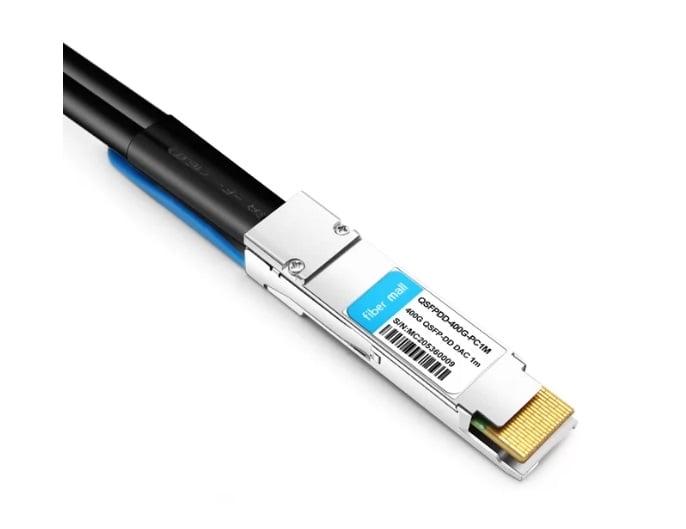
Advantages Of Traditional Ethernet Solutions
Conventional Ethernet solutions have proven benefits that can be used in many network infrastructures. First, it is the cheapest overall since it utilizes well-established technologies with low equipment and maintenance costs. Second, conventional Ethernet has excellent integration and reliability characteristics since it is standardized and can function properly with various equipment and networks. Finally, the scalability of Ethernet allows for increasing data traffic, which can be done by enlarging the size of the network and upgrading the infrastructure without necessarily having to change it completely. These qualities make Ethernet solutions suitable for fast-growing enterprises. Such benefits make conventional Ethernet successful for a large proportion of organizations targeting stable, affordable networks, especially with direct attach copper cable technology.
Impact on High-Density Network Environments
In high-density network scenarios, it has become commonplace to implement 400G QSFP-DD technologies, which improve bandwidth and performance metrics. Several market leaders state that integrating such high-capacity modules helps satisfy the outstanding need for data across large data centers and telecommunications networks, utilizing passive direct attach copper solutions. Better data rates allow for reduced delays and smooth performance and operation, which are the most important aspects when dealing with many simultaneous data streams, as is the case in cloud computing and AI-based workloads. In addition, these technologies allow the optimization of space and energy, which are of great importance in the architecture and operations of up-to-date data centers, thereby enabling organizations to remain aggressive and environmentally friendly in their operations against the background of fast data development.
Future-Proofing with QSFP-DD Technologies
Integrating QSFP-DD (Quad Small Form Factor Pluggable Double Density) technologies into networks promises to address the current obstacles, especially regarding ultra-high-speed data transmission. Cisco and Arista Networks state that these module types can withstand up to 400Gbps data rates, increasing their possibility and relevance as data-hungry applications increase. QSFP-DD modules also utilize advanced modulation technologies and throughput capabilities, ensuring such technologies do not fall short of the requirements for 5G, IoT, and AI. Moreover, as network solution specialists are underlining, these technologies are not only future-oriented but also bring some additions to the existing designs without interrupting them, making the transition to next-generation networks possible.
How Do Cable Assemblies Work with QSFP-DD?
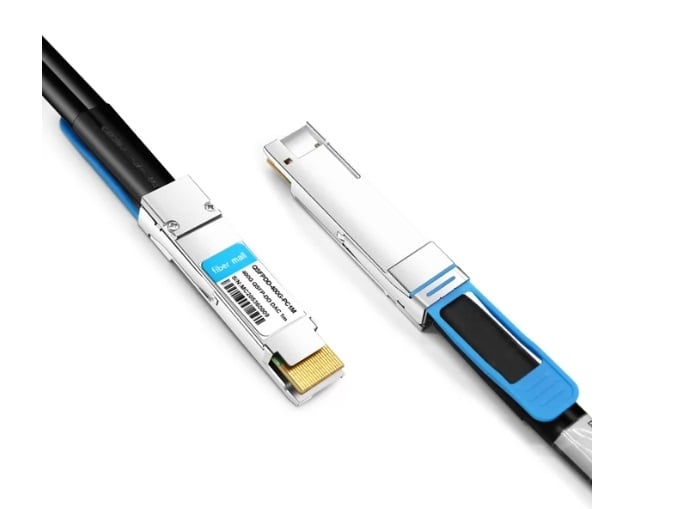
The Diversity of Copper Cable Assemblies
Copper cable assemblies are instrumental in enhancing connectivity within QSFP-DD applications in a reliable, economical manner. According to top technology websites, these assemblies are configured differently, with features such as direct-attach copper (DAC) cables, which are preferred because of their sturdiness and ability to maintain high-speed signal integrity over a short distance. Also, active copper cables contain signal conditioning that allows longer distances to be transmitted, using less latency and power. These assemblies were designed with a certain degree of flexibility in mind, meaning that multiple form factors and lengths are offered to fit many different network configurations without sacrificing performance or scalability, especially with qualified passive copper cables that allow for many setups. As such, copper cable assemblies are economical while maintaining optimized performance and meeting the ever-changing environment of data-rich surroundings.
The Efficiency of Passive Copper Solutions
I am concerned with passive copper solutions’ economic feasibility and the energy savings they offer for QSFP-DD applications. Passive copper cables differ from their active counterparts and do not need extra electrical components incorporated for factual signal boosting. Hence, power usage and overall investment in the system are greatly minimized. Best technology websites assess that these solutions are best suited for short-distance connections with good signal quality. Their ease of use and strength make them suitable for data centers where there is a need to reduce complexity while ensuring reliability if passive copper cables provide next-generation options. The networking setup using passive copper solutions is favorable when cost and performance requirements have to be weighed.
Customization and Application-Specific Designs
Copper cable assemblies offer various configurations and application-specific solutions as manufacturers worldwide appreciate that such solutions allow them to meet diverse industrial needs. New reviews of the best technology resource portals state that manufacturers can customize cables for unique requirements such as length, connectors, and usage of shields, among others. This customization allows the wires to suit various operational settings, such as high-density data centers and telecommunications networks. In addition, it is also noted that a number of these websites advocate for the design of the application connectors and sockets to meet industrial needs and allow for growth to improve performance with technological advances. Thus, customization fulfills the need for copper solutions to be suited for specific applications and ensures insulation against current technology strategies.
Frequently Asked Questions about 400G QSFP-DD to QSFP-DD Connectivity
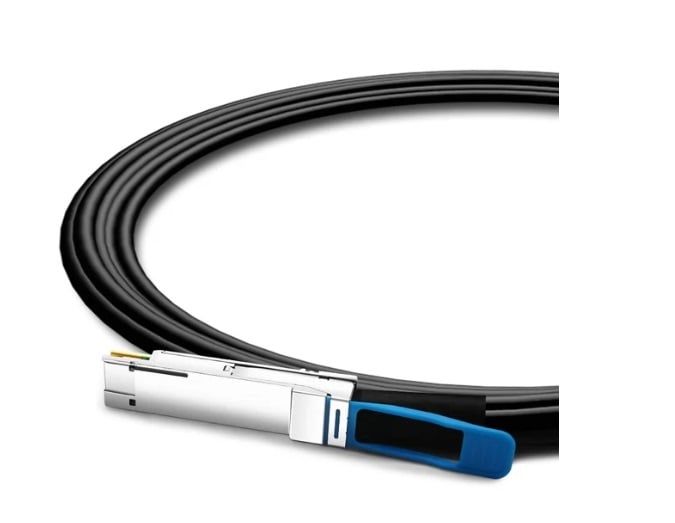
How Does Breakout Functionality Benefit Networks?
Breakout functionality in network systems enhances flexibility and scalability. It enables a single high-speed port (for example, 400G QSFP-DD) to be divided into several lower-speed ports, let’s say 4x100G, thus allowing effective bandwidth allocation. This function can be more useful in the data center and telecommunication settings due to the low voltage requirements being easily integrated through the use of Amphenol 800-gigabit ethernet passive copper options. Breakout cables allow the network resources to be optimized on a workload basis, equipment costs to be minimized through the optimal utilization of available resources and the renovation and expansion of a network. This versatility enables the management of data streams to be variable about a particular application and network type for better overall performance.
Can QSFP-DD Cables Support 800G Transfers?
QSFP-DD cables are meant for 400G applications and do not support 800G transfer rates; however, there are unique methods, such as loopback testing, that can be utilized to evaluate performance. With the ever-evolving landscape of technology, there is room for possibilities. Some of these are future MSAs introducing new modules or form factors that can push across 800G while still being capable with the current interfaces of QSFP-DD. Currently, 800G deployments typically utilize different types of connectors, such as OSFP or COBO, designed for the very high data rates required for such applications. Therefore, although a QSFP-DD is a suitable solution for a client’s high-speed networking needs, moving to 800G will likely mean adopting new cable standards and technologies to transmit the higher capacity.
What are the Key Components of a Transceiver?
In optical communication, communication networks contain integral components known as transceivers. A laser diode or an LED converts electrical signals into optical signals; the transmitter performs this function. A photodiode is commonly used as an optical signal detector. Wavelength filters enhance individual wavelengths, and multiplexers/demultiplexers enable a single fiber for two-way communications. Moreover, modulators change the light waves’ characteristics to carry some information, and clock and data recovery units (CDR) maintain the signal and provide synchronization. Through the cooperation of these parts, transceivers, data transmission, signal quality maintenance, and modern communication network demands are all within reach.
Reference Sources
Frequently Asked Questions (FAQs)
Q: What exactly is QSFP-DD, and how does it improve upon the regular QSFP?
A: QSFP-DD (Quad Small Form Factor Pluggable Double Density) is a development of the QSFP form factor that is superior to the former. It has increased density and bandwidth capabilities compared to the normal QSFP. QSFP-DD can provide connectivity of up to 400G with a single affordable double-density QSFP Package and finds its applications in high-speed networks of the next generation.
Q: What are the benefits realized from using QSFP-DD 112G cables?
A: QSFP-DD 112G cables have several advantages, such as high data rates of up to 400G, signal integrity, and backward compatibility with lower-speed QSFP modules. These cables allow PAM4 signaling and permit ‘next generation’ performance for data centers and high-performance computing environments.
Q: Which is better: active or passive QSFP-DD cables and connectors?
A: An active QSFP-DD cable has a built-in signal amplification circuitry; therefore, it has a better signal quality and further transmission distance. On the other hand, passive QSFP-DD cables, such as direct attached copper (DAC) cables, can be used cost-effectively for short distances and are simple to manufacture. Passive copper cable assemblies can be used for inter-rack connections, while active cables have the advantage of long-run length.
Q: What are the high-density connectivity applications for QSFP-DD and OSFP?
A: The OSFP (Octal Small Form Factor Pluggable) and QSFP-DD are extensively used in cases where a dense 400G link needs to be established. Each has its advantages for deployment; having QSFP-DD still has backward compatibility with all the previous QSFP forms; this is not true for OSFP. However, there is more room in the OSFP form; hence, there can be more room for faster speed in the future. Often, the selection is made based on the configuration and specific network needs.
Q: What are the applications for Ethernet passive copper QSFP double-density cables?
A: Ethernet passive copper QSFP double-density cables, like Amphenol 400-Gigabit Ethernet passive copper cables, deliver state-of-the-art speeds in a compact size. These cables transmit data at greater speeds, have lower latency, and are affordable for connections within data centers over a short distance.
Q: How does the QSFP-DD MSA leverage progress toward 400G connectivity?
A: The QSFP-DD MSA (Multi-Source Agreement) seeks to foster collaboration across the industry for the specification standardization for the cable and module of the form factor QSFP-DD. This particular agreement is vital since it allows interoperability of products from various vendors; it encourages advancement and assists many as they work toward adopting the 400G and faster connectivity solutions, facilitating the use of higher bandwidth.
Q: What are the primary uses of the QSFP-DD cables at the data centers?
A: The data centers use QSFP-DD cables mainly to ensure high-speed switch-to-switch or switch-to-server connections. Their data rate can support 100G, 200G, and 400G, so it can fit in various network architecture scenarios. QSFP-DD is also beneficial for high-bandwidth and port-density applications, which are typical in cloud computing and extensive business networks.
Q: In what regard are QSFP-DD transceivers superior to the QSFP56 transceivers?
A: The difference between the two is in the data rates, with the QSFP-DD transceivers reaching 400G while the QSFP56 transceivers had their maximum at 200G. The QSFP-DD employs eight high-speed electrical lanes, whilst four come with QSFP56. Furthermore, it is also common for QSFP-DD transceivers to use PAM4 signaling as a standard. For QSFP56, NRZ or PAM4 signaling may be used depending on the configuration, but up to 400G direct attach copper cables applications may be possible.
Related Products:
-
 QSFP-DD-400G-AC3M 3m (10ft) 400G QSFP-DD to QSFP-DD PAM4 Active Direct Attach Copper Twinax Cable
$350.00
QSFP-DD-400G-AC3M 3m (10ft) 400G QSFP-DD to QSFP-DD PAM4 Active Direct Attach Copper Twinax Cable
$350.00
-
 QSFPDD-400G-PC50CM 0.5m (1.6ft) 400G QSFP-DD to QSFP-DD PAM4 Passive Direct Attach Copper Twinax Cable
$70.00
QSFPDD-400G-PC50CM 0.5m (1.6ft) 400G QSFP-DD to QSFP-DD PAM4 Passive Direct Attach Copper Twinax Cable
$70.00
-
 QSFP-DD-400G-AOC-1M 1m (3ft) 400G QSFP-DD to QSFP-DD Active Optical Cable
$655.00
QSFP-DD-400G-AOC-1M 1m (3ft) 400G QSFP-DD to QSFP-DD Active Optical Cable
$655.00
-
 QSFP-DD-400G-AOC-2M 2m (7ft) 400G QSFP-DD to QSFP-DD Active Optical Cable
$660.00
QSFP-DD-400G-AOC-2M 2m (7ft) 400G QSFP-DD to QSFP-DD Active Optical Cable
$660.00
-
 QSFP-DD-400G-AOC-3M 3m (10ft) 400G QSFP-DD to QSFP-DD Active Optical Cable
$665.00
QSFP-DD-400G-AOC-3M 3m (10ft) 400G QSFP-DD to QSFP-DD Active Optical Cable
$665.00
-
 QSFP-DD-400G-AOC-5M 5m (16ft) 400G QSFP-DD to QSFP-DD Active Optical Cable
$670.00
QSFP-DD-400G-AOC-5M 5m (16ft) 400G QSFP-DD to QSFP-DD Active Optical Cable
$670.00

